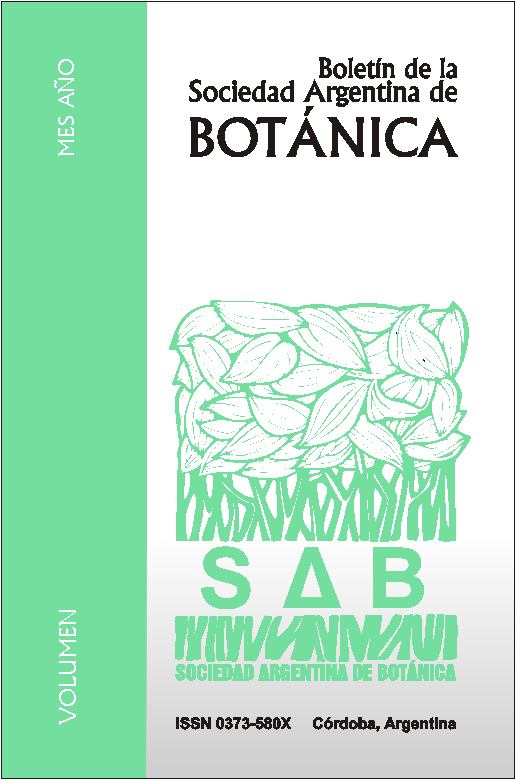Physical seed dormancy in native legume species of Argentina
DOI:
https://doi.org/10.31055/1851.2372.v51.n1.14370Keywords:
Leguminosae, physical dormancy, scarification, seed germination.Abstract
Leguminosae is a family with high value of use for food, medicine, forage, ornamental and restoration ecology purposes. One obstacle for the use and management of many legume species is the presence of seeds with physical dormancy. Here, we evaluated the presence of physical dormancy in nine native species of Argentina and identified possible methods for breaking dormancy. Caesalpinia gilliesii, Geoffroea decorticans, and Prosopis alpataco have seeds with no physical dormancy, whereas Crotalaria incana, C. pumila, C. stipularia, Desmanthus virgatus, Galactia texana, and Senna aphylla have seeds with physical dormancy. The most effective methods for breaking physical dormancy were mechanical and wet heat (100°C) scarification for Crotalaria spp.; mechanical, acid (20 and 30 min) and wet heat scarification (80 and 100°C) for D. virgatus; mechanical scarification for G. texana and mechanical and all acid scarification treatments for S. aphylla. These results contribute to the knowledge of the germination biology for these species, and are of particular interest for their propagation in glasshouse and for restoration and conservation programs.
Downloads
Published
Issue
Section
License
Provides immediate and free OPEN ACCESS to its content under the principle of making research freely available to the public, which fosters a greater exchange of global knowledge, allowing authors to maintain their copyright without restrictions.
Material published in Bol. Soc. Argent. Bot. is distributed under a Creative Commons Attribution-NonCommercial-ShareAlike 4.0 International license.





